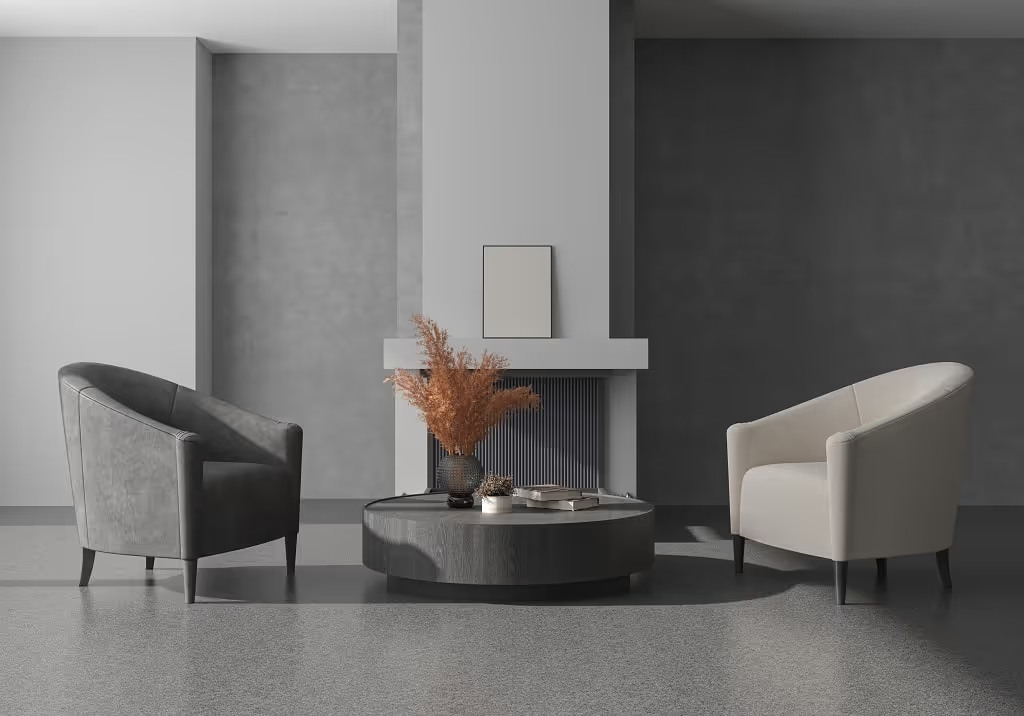- Stone Center
- Blog
Fireplace Safety Tips: Keeping Your Home Warm and Secure
24/10/2024
8/8/2024
Fireplace Safety Tips: Keeping Your Home Warm and Secure
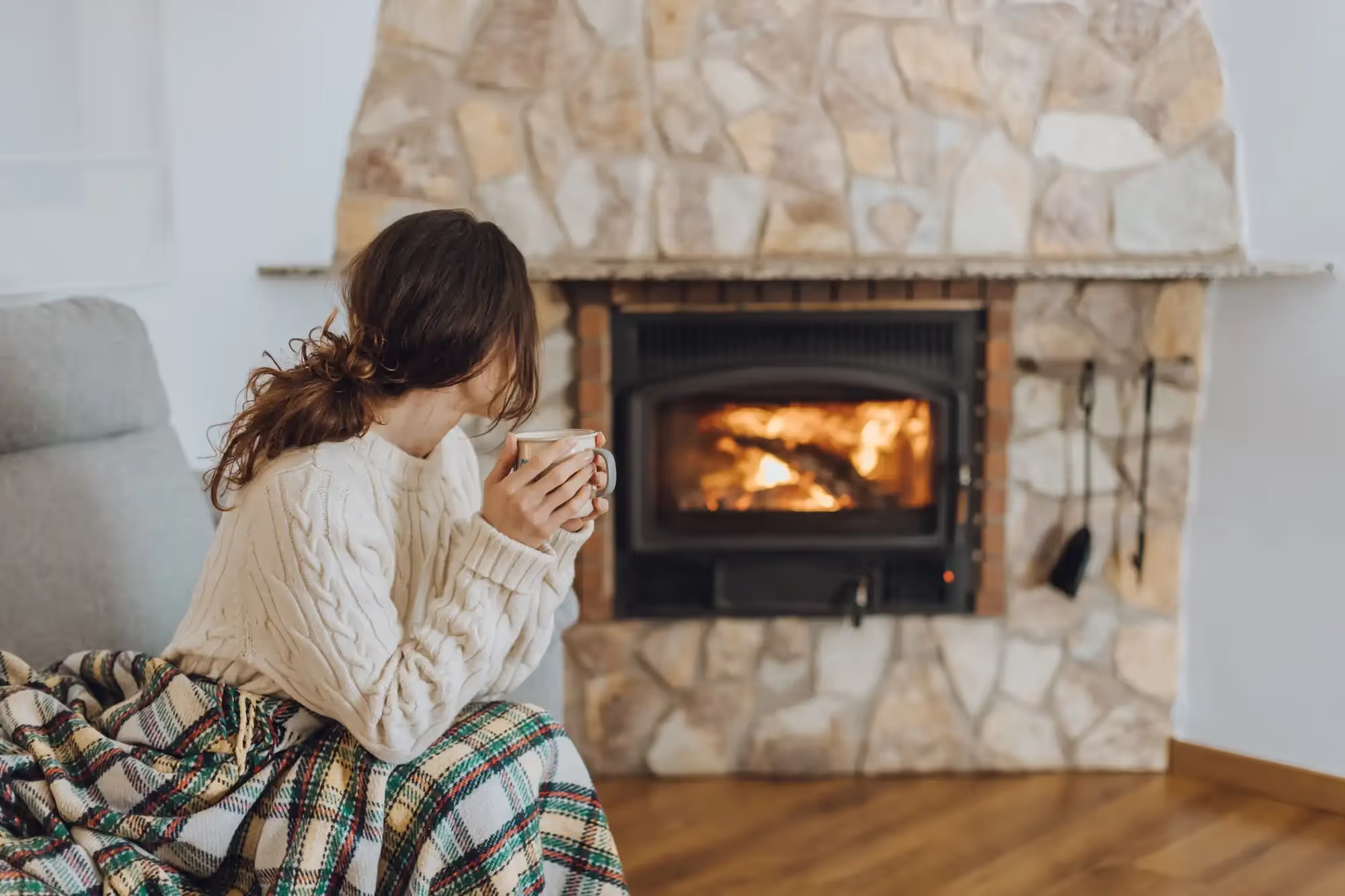
Are you ready to cozy up by your stunning stone fireplace this winter? Before you bask in its warmth and glow, you’ll need to take the necessary steps to make your fireplace safe and ready for the season. At Stone Center LLC, we specialize in creating beautiful limestone and cast stone fireplace surrounds and are dedicated to helping you prioritize fireplace safety.
While this article covers general tips for all types of fireplaces, we'll also provide specific advice for stone fireplaces, reflecting our expertise and passion. Let’s dive into essential tips to keep your home and loved ones secure while enjoying all the benefits of your exquisite stone fireplace.
General Fireplace Safety Tips
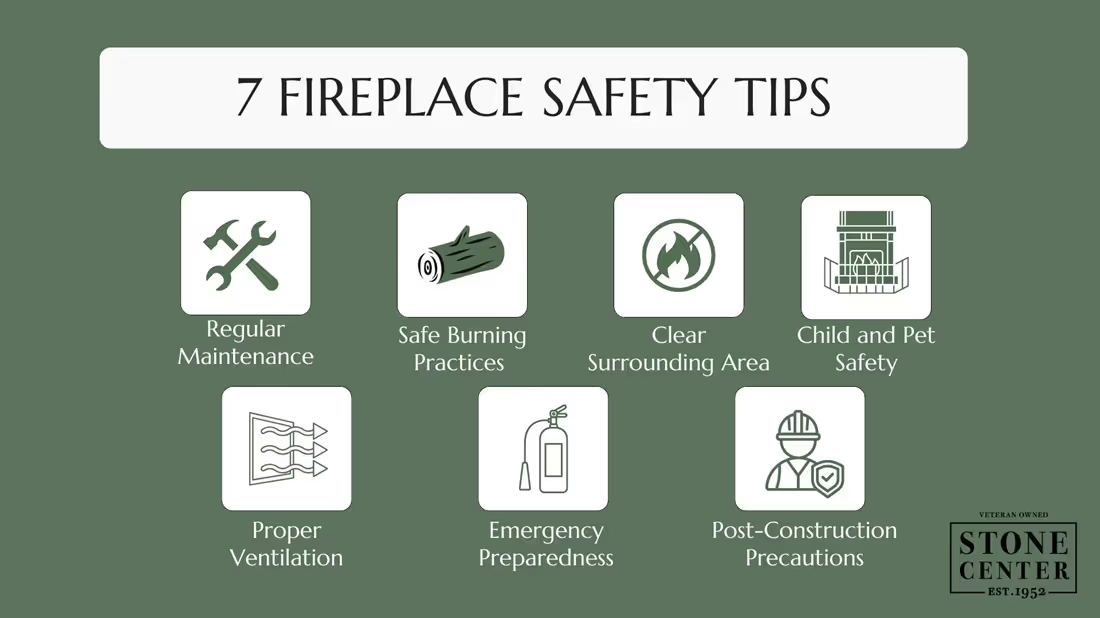
Before diving into specific advice for different types of fireplaces, let's cover some general safety tips that apply to all fireplaces. These guidelines will help your fireplace be both safe and efficient.
1. Fireplace and Chimney Maintenance
Regular maintenance is the foundation for a safe, efficient fireplace. Schedule annual professional inspections to identify any potential issues and address them promptly. Regular cleaning, including removing ashes and debris, can prevent buildup that could lead to chimney fires. Our experts can also perform masonry checks and repairs to maintain the integrity of your fireplace and chimney. If needed, we can replace or close your fireplace damper to improve efficiency and safety.
2. Safe Burning Practices
When using your fireplace, it's important to use appropriate materials so it operates as it should. For a wood-burning fireplace, it's important to use appropriate materials. Always burn dry, well-aged wood to minimize smoke and creosote buildup. Wet or green wood causes more smoke and contributes to soot buildup in the chimney. Smaller pieces of wood placed on a grate burn faster and produce less smoke. Avoid burning treated wood, plastics, or other materials that can release toxic fumes. If you use manufactured fire logs, follow the manufacturer's instructions for proper use. Consider using local firewood to help prevent the spread of invasive pests and diseases.
3. Surrounding Area Safety
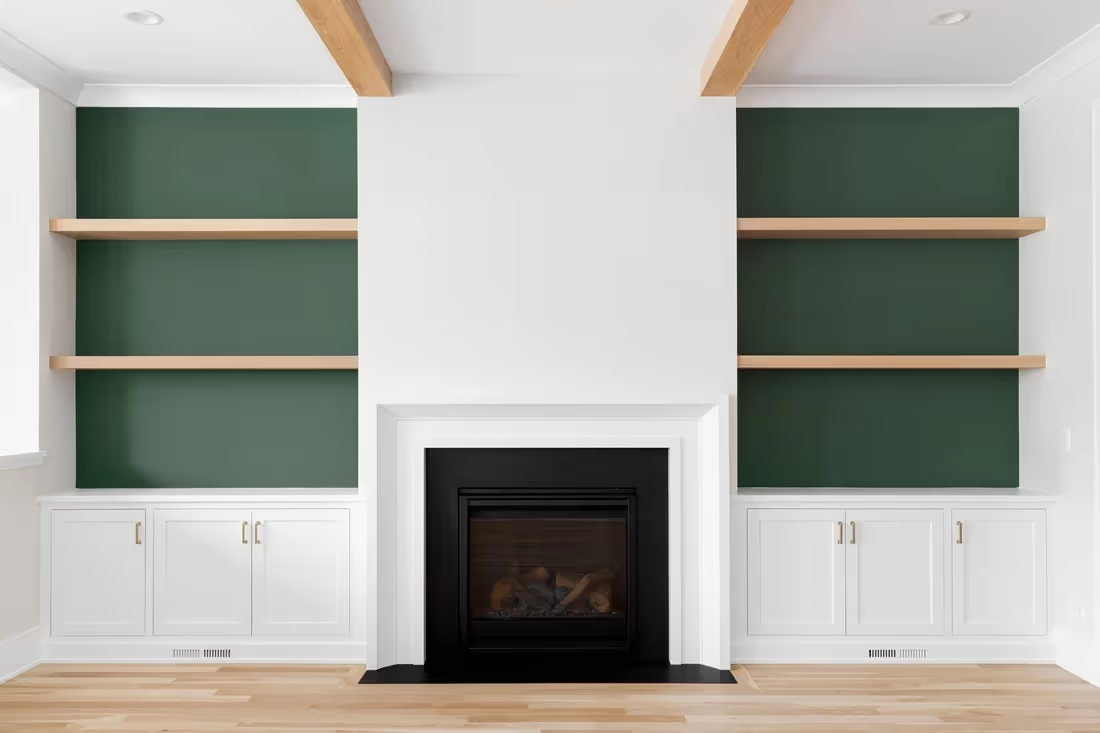
To minimize fire hazards, keep the area around your fireplace clear of flammable objects such as furniture, curtains, newspapers, books, and other combustible materials. Install a fire-retardant hearth rug to protect your flooring from sparks and embers. Use safety screens to prevent sparks from escaping the fireplace, and keep glass doors open during use to ensure proper ventilation. If you have a gas fireplace, consider installing safety screens to reduce the risk of burns from the hot glass front.
4. Child and Pet Safety
If you have small children or pets, take extra precautions to keep them safe around your fireplace. Keep lighters and matches out of reach, and consider installing a childproof gate or barrier to prevent curious little ones from getting too close. Never leave a fire unattended, and make sure to fully extinguish the flames before leaving the room or going to bed. If you leave the room while the fire is burning or the fireplace is still hot, take your small child with you. Put fireplace tools and accessories out of a young child's reach. Talk with children as early as possible about the dangers of fires and the heat coming from them.
5. Ventilation and Air Quality
Proper ventilation is crucial for maintaining good air quality and preventing the buildup of dangerous gasses like carbon monoxide. If possible, keep a window cracked open while the fire is burning. Double-check that the damper or flue is open before starting a fire and keep it open until the fire is out and the embers have completely stopped burning. This will help draw smoke out of the house. Ensure that your chimney isn’t blocked by debris or animal nests, and consider installing a chimney cap to prevent further blockages.
6. Emergency Preparedness
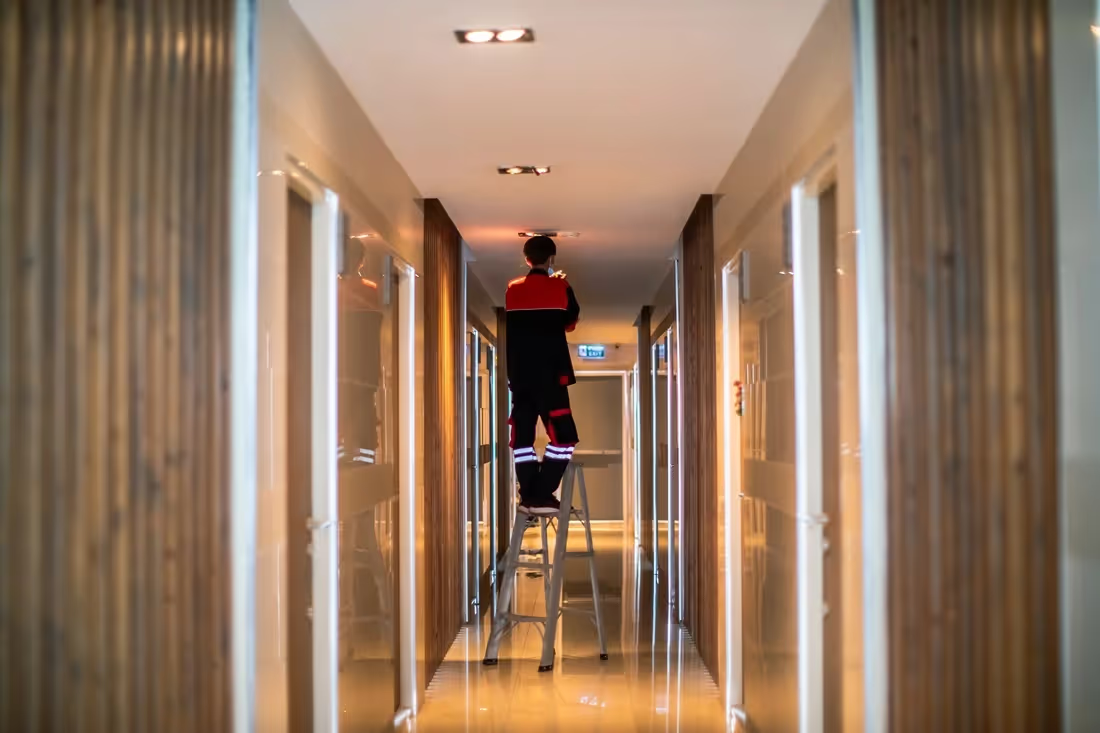
Despite your best efforts, accidents can still happen. Be prepared for emergencies by installing smoke alarms and carbon monoxide detectors in your home, and make sure to test them regularly. Keep a fire extinguisher nearby and ensure that all family members know how to use it. Develop and practice an emergency evacuation plan so that everyone knows what to do in the event of a fire.
7. Post-Construction Precautions
If you've recently had your fireplace installed or have undergone construction in your home, take extra precautions before using your fireplace. Allow time for proper sealing and insulation to prevent toxic fumes from entering your living space. Avoid using your fireplace immediately after construction, and have a professional inspect it to make sure it’s safe to use.
Tips for Specific Fireplace Types
To further enhance the safety and longevity of your fireplace, it's beneficial to consider the specific type of fireplace you have. Here are some tailored tips for stone fireplaces, wood-burning fireplaces, and gas fireplaces.
Stone Fireplaces
- Proper Cleaning: Stone fireplaces need regular cleaning to prevent soot and smoke stains. Use a mild detergent and a soft brush to clean the stone surface, avoiding harsh chemicals that could damage the stone.
- Sealing: Sealing your stone fireplace can help protect it from stains and make cleaning easier. Check with your stone supplier for recommended sealants and reapply as directed.
- Inspect for Cracks: Regularly inspect your stone fireplace for cracks or damage. Small cracks can often be repaired with a stone patching compound, but larger issues may need the help of a professional.
Wood-Burning Fireplaces
- Choosing the Right Wood: For wood-burning fireplaces, use seasoned hardwoods like oak, maple, or ash. These woods burn hotter and cleaner than softwoods, reducing creosote buildup.
- Storing Wood: Store your firewood in a dry, well-ventilated area to prevent moisture absorption. Wet wood produces more smoke and creosote, increasing the risk of chimney fires.
- Ash Disposal: Regularly remove ashes from your wood fireplace, but make sure they are completely cool before disposing of them. Store ashes in a metal container with a tight-fitting lid away from your home and other flammable materials.
Gas Fireplaces
- Annual Inspections: Have your gas fireplace inspected annually by a qualified professional to make sure it’s functional and safe. They will check for leaks, damage, and other potential issues.
- Clean the Logs and Burner: Regularly clean the ceramic logs and burner to remove dust and debris. Follow the manufacturer's instructions for proper cleaning methods.
- Keep Vents Clear: Make sure the vents for your gas fireplace are clear of obstructions, such as curtains, furniture, or decor items, to achieve proper ventilation and prevent carbon monoxide buildup.
- Install Carbon Monoxide Detectors: Install carbon monoxide detectors near your gas fireplace and throughout your home to alert you of any potential leaks or malfunctions.
Common Misconceptions and Myths About Fireplace Safety
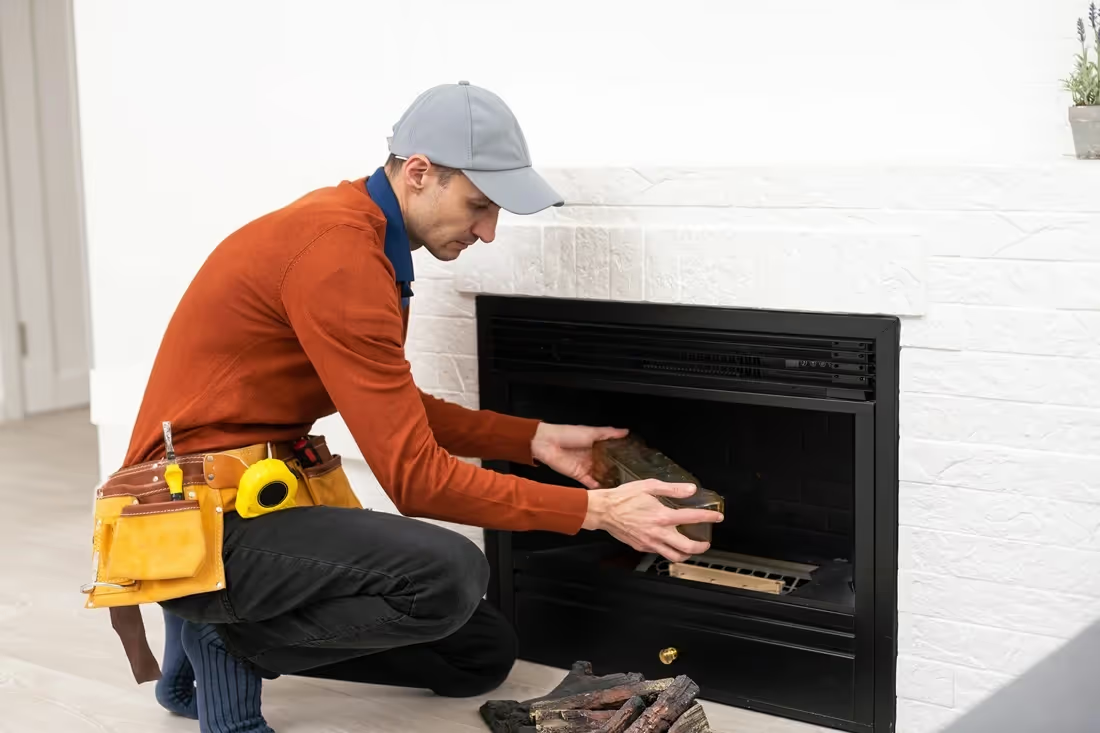
When it comes to fireplace safety, there are several misconceptions and myths that can put homeowners at risk. Let's take a moment to debunk some of these common beliefs and provide accurate information to help keep you and your family safe.
Myth: A fireplace doesn't need to be cleaned if it's used infrequently.
Fact: Regardless of how often you use your fireplace, it's essential to have it cleaned and inspected annually by a professional. Even a small amount of buildup can increase the risk of chimney fires and other safety hazards.
Myth: Burning pine or other softwoods will cause creosote buildup.
Fact: While it's true that softwoods tend to produce more smoke and residue than hardwoods, the primary cause of creosote buildup is burning wood that hasn't been properly seasoned. As long as you use dry, well-aged wood, you can safely burn softwoods in your fireplace.
Myth: A gas fireplace doesn't require maintenance.
Fact: Although gas fireplaces don't produce creosote, they still require regular maintenance to ensure proper function and safety. An annual inspection by a qualified professional is recommended to check for leaks, damage, and other potential issues.
Myth: It's safe to leave a fire extinguisher near the fireplace for easy access.
Fact: While it's important to have a fire extinguisher in your home, it should be stored away from the fireplace. The extreme heat from the fireplace can damage the extinguisher and make it ineffective in an emergency.
Myth: A fireplace will keep your home warm during a power outage.
Fact: While a fireplace can provide some warmth and light during a power outage, it's not an efficient or reliable source of heat. Fireplaces can actually draw warm air out of your home, making other rooms colder. It's important to have alternative heating sources and emergency plans in place.
Enjoy a Safe and Cozy Fireplace with Stone Center LLC
Fireplace season is right around the corner. By following these fireplace safety tips, you can create a warm, inviting, and secure atmosphere in your home. Remember to prioritize regular maintenance, use appropriate materials, and stay vigilant for potential hazards. Trust Stone Center LLC to provide beautiful, durable limestone fireplace surrounds and cast stone fireplace mantels that enhance both safety and elegance.
Our expert team is here to guide you in selecting the perfect stone fireplace for your home while ensuring you have the knowledge to enjoy it safely. Contact us today to learn more and get started on your fireplace project!
FAQ
.avif)
Jon, the owner of Stone Center, is a knowledgeable expert in natural stone products, specializing in various types of stone for landscaping and architectural projects. Passionate about promoting the beauty and versatility of natural stone, Jon aims to use these blogs to inspire readers with creative ideas to upgrade their homes.
How much does it cost to get a stone restored?
How much you end up spending to restore stone varies on the type of stone, the technique, and the stone’s current condition. Stone in good condition will cost less to restore, whereas stone that has a lot of wear and tear may require a longer restoration.





